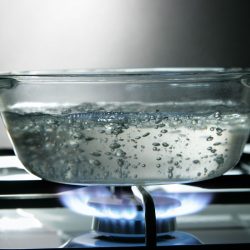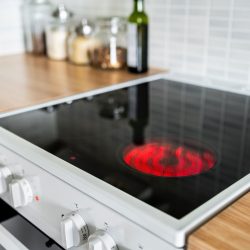If you do not own an oven, or if your oven is overloaded already and cannot fit another item, it seems, either way, you have a reason to wonder whether you can bake on the stovetop. To help keep your focus on delicious recipes, we've researched whether baking on a range is feasible.
Whether using a gas, an electric, or an induction range, you can fire-up the burners to bake a variety of meals, side dishes, and desserts directly on the stovetop. For baking on the stovetop, you may want to consider:
- Selecting the right type of cookware,
- Modifying the temperature,
- Adjusting the cook-time, and
- Adapting measurements of the ingredients for your recipes.
Keep reading to learn how to prepare to bake on the stovetop by selecting cookware and modifying recipes for your range. We will discuss how baking temperature and cook time are potentially altered on the stovetop and suggest some simple, tasty recipes to try. Finally, if you are looking for an alternative to baking in the oven and want to venture away from the stovetop, we've got suggestions for you.
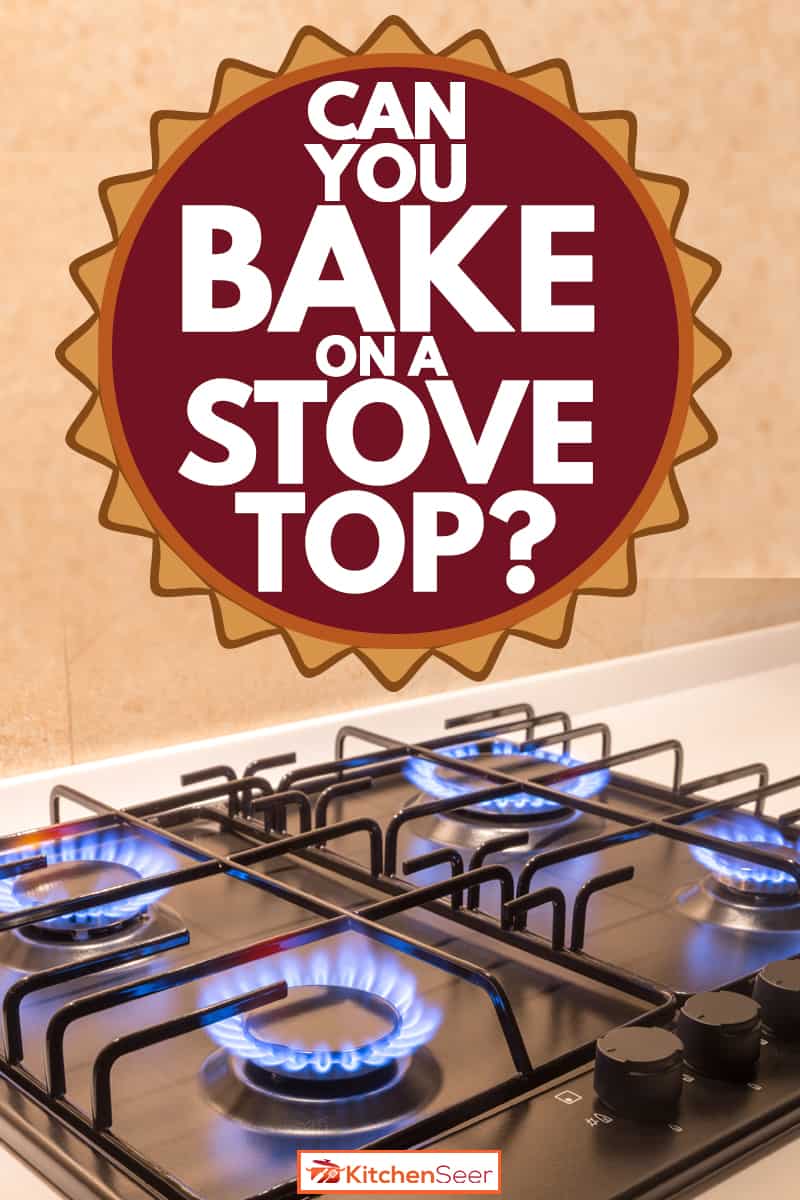
Bake On Any Type Stovetop
The stovetop offers a timesaving, energy-efficient method of baking. No matter the type of range you use, learn how the different techniques used to transfer heat make baking over a range a cinch.
Electric Range
Electric stovetops require a shorter wait for the range to initially heat-up compared to gas or induction but are typically slower bake time for your finished dish. Cookware used to bake on an electric range heats food evenly along the bottom and sides, with lingering heat after the burner is turned off so you can finalize the bake without watching over the stovetop.
Gas Range
Gas stove users enjoy quick-heating, with an instant on-or-off burner flame. Because the flame produces intense heat, baking is faster, so your oven recipe might require a lower cooking temperature or less time on a gas range. The gas stove burner is immediately hot when the burner is turned on; when the burner is turned off, the heat source is immediately gone.
Induction Range
Induction stovetops feature precise temperature control and electromagnets that instantly transfer energy to heat metal cookware. Be aware that you might need to reduce cooking time to bake oven recipes on an induction stovetop.
What To Consider For Stovetop Baking
Cookware
Baking on either electric or gas ranges requires no particular type of cookware. As you may already be aware of an induction range, use ferromagnetic, induction-compatible, either cast iron or stainless steel cookware. If a magnet sticks, the cookware should be compatible with induction stovetops.
Temperature Modifications
Consider setting lower temperatures for gas and induction stovetop baking than typically recommended for most oven recipes. If you use too high a temperature, you might overcook the bottom portion and undercook the top portion of your recipe.
When using an electric stove burner, remember that due to lingering heat, the baking process will continue after the burner is turned off. So, although the temperature drops, unless you remove the cookware from the range, your baked dish can potentially overcook.
Cook-time Adjustments
Bake recipes often require adjusted cook-times to prepare on a stovetop. Thinner batters, for example, could take up to one hour on a stovetop versus a shorter duration of time on the oven. For some bake recipes, you might need to monitor atop the stove and turn off the burner within five minutes of hearing condensed steam hiss or smelling the baked aromas. The best way to manage cook-times for stovetop baking is by trial and error to perfect your favorite recipes.
Here are some other helpful time adjustment tips:
- For cakes, test doneness by inserting either a toothpick, knife, or fork into the center; if the utensil comes out clean, your cake is ready.
- Try to avoid peeking at your stovetop baked good because the lid will increase the cooking time.
- Remove bread, cake, and muffins from the pan as soon as thoroughly cooked to avoid overcooked or dried-out bottoms and edges.
Recipe Adaptations
To ensure your stovetop recipe has room to rise and bakes thoroughly in your selected cookware, you might need to adapt the recipe. The best stovetop results often occur in a smaller baking vessel or a modified pot providing ample air circulation (by using a rack, foil, or second pot) between the food and the outer walls. A lid or foil cover may better allow the stovetop pan to hold heat.
Try dividing your batter in half for smaller cookware or reducing ingredients by a third from the oven-baked version. Alternatively, divide your batter or ingredients among multiple, smaller pans.
Capturing steam is an important consideration when baking a cake or roasting a main dish. Consider using stovetop-specific, oven cookware to allow steam to escape or cover cookware using either a lid or foil to trap moisture.
Click here to see this Omnia Stovetop Oven on Amazon.
Can You Bake In A Frying Pan On The Stove?
Bake in a frying pan on the range. Consider dividing the batter or proportioning the ingredients, so you have ample space in the pan. Some frying pans equipped with lids are ideal for stovetop baking.
Click here to see this on Amazon.
Can You Bake In A Dutch Oven On The Stove?
A cast-iron Dutch oven works well for most stovetop baking, primarily because you can utilize a pan or rack inside the Dutch oven to keep the bottom from burning and the sides from touching for an even bake. Add water to produce steam, as needed for moist cakes and lava cakes.
Click here to see this on Amazon.
How Else Can You Bake Without An Oven?
Try using an electric griddle as your pan-heating surface to bake without an oven or stovetop with the tips mentioned above.
Click here to see this on Amazon.
Use a campfire, wood stove, or grill for baking without an oven or stovetop. For this rugged bake style, note that it takes about twelve charcoal briquettes to produce a temperature between 300℉ and 350℉ degrees in a nine-inch, cast-iron Dutch oven.
Click here to see this on Amazon.
Consider using a microwave for baking cakes, either using mugs or silicon fluted cake pans.
Click here to see this on Amazon.
Finally, use our previously mentioned adaptive baking tips for recipes in a crockpot, pressure cooker, or electric skillet.
Click here to see this on Amazon.
Stovetop Baking Recipes
Stovetop baking is virtually unlimited! Check out these recipe ideas:
- Try this traditional cornbread recipe for a golden, top-of-the stove delight.
- Cheesy stovetop tuna casserole is great for dinner-on-a-budget or a cozy, comfort meal.
- For a melt-in-your-mouth stovetop side, you cannot go wrong with this mushroom-enhanced, stovetop green bean casserole.
- Are you feeling adventurous? Try this stovetop holiday apple cake that offers a zingy spiced-cake combination of apples, apricots, and molasses.
Summary
No matter your reasoning, stovetop baking is both rewarding and scrumptious. Stovetop recipes are readily available, or you can experiment with your favorites by adjusting time, temperature, and quantities. Create delicious stovetop delights on your gas, electric, or induction range. Check out our related articles for even more helpful tips:
25 Types Of Baking Dishes You Need In Your Kitchen
5 Easy Baking Paper Sheets Alternatives








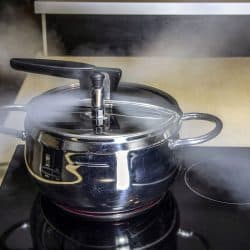
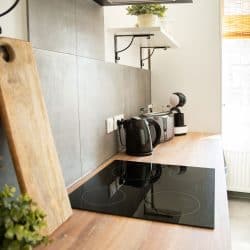
![Modern kitchen appliance on wooden table, Can I Use Non Stick Pans On An Induction Stove? [Yes! How To & Tips]](https://kitchenseer.com/wp-content/uploads/2022/10/Modern-kitchen-appliance-on-wooden-table-250x250.jpg)

